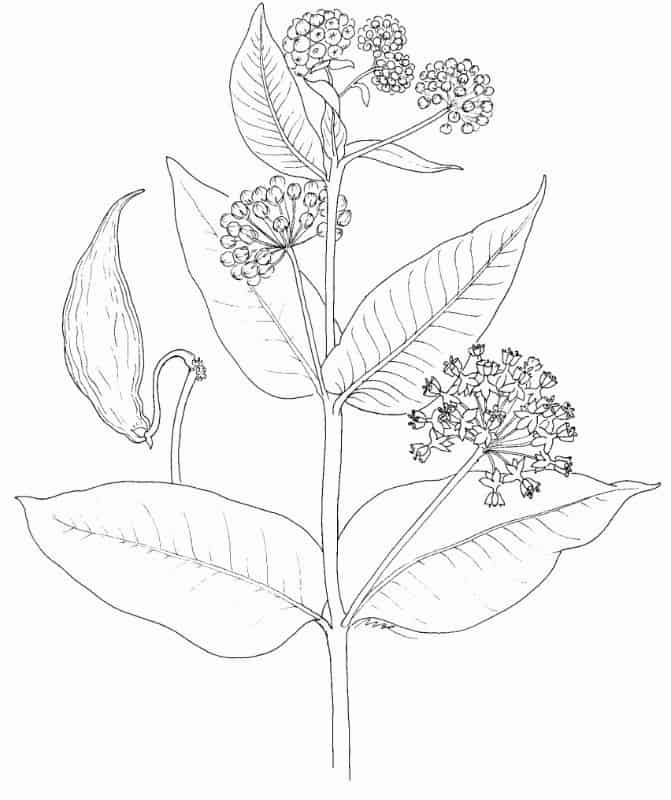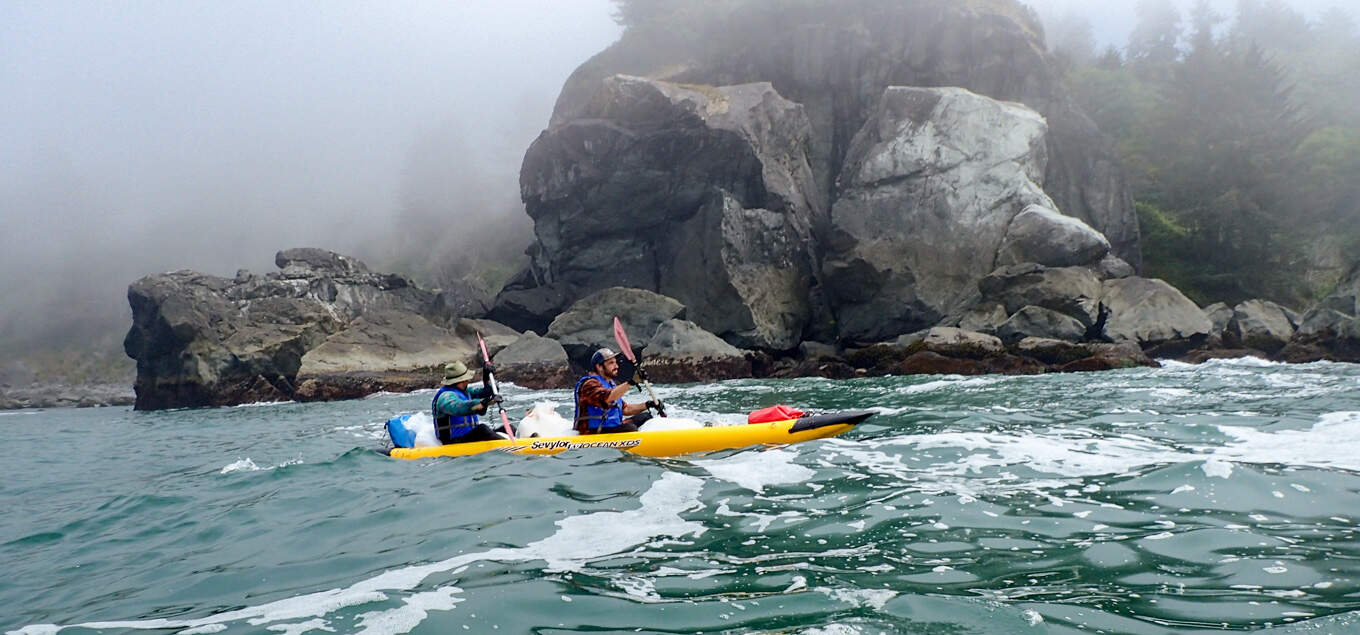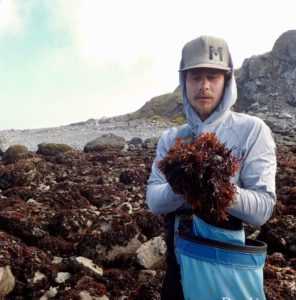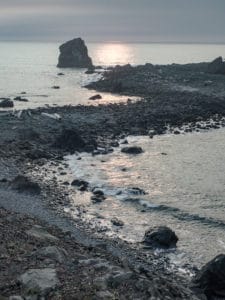What are seaweeds?
Seaweeds, or marine algae, are an ancient group of primitive sea plants. They have been botanically divided into three main groups: Red marine algae (Rhodophyta), Brown marine algae (Phaeophyta), and Green marine algae (Chlorophyta). Seaweeds have evolved into a diverse assortment of beautiful colors, shapes and sizes. They grow in all of the world’s oceans, and are especially abundant on rocky coastlines where they are exposed at low tide. “Kelp” is a term that loosely refers to the larger brown seaweed species. Edible seaweeds are often called “sea vegetables.”
History of human use
Humans have been using seaweeds for food and medicine since time immemorial. Ancient traders brought seaweeds inland to mineral-deficient regions like the Himalayas and Rocky Mountains. Traditional Asian and Polynesian cultures continue to use seaweeds as health-giving foods and medicines. Most Western cultures abandoned the use of seaweeds as food and medicine a long time ago. In recent times, however, people in the United States and Europe have re-discovered seaweeds as healthy and flavorful foods, as nutritional supplements and as medicines.
Adding seaweeds to your diet
Different seaweeds have different flavors and textures. Some sea vegetables may be eaten dried as salty snacks, like potato chips or jerky. Others are best when cooked until tender. Powdered seaweeds may be sprinkled on foods, added to smoothies, or simply mixed into a cup of water or juice. Some people prefer the convenience of taking seaweeds in capsule form. All sea vegetables and seaweed powders can be used in tasty recipes.
Seaweed recipes
Welcome to the world of seaweed cuisine! Seaweed dishes are becoming popular in many fine restaurants. Visit our seaweed recipes section and get cooking.
How much seaweed is good to eat?
Three to six grams of dried seaweed per day is a good average dietary amount for nutritional or therapeutic purposes. That’s about 3 to 5 pounds per person per year. Eating a small amount with each meal, every day provides the greatest therapeutic benefits. This amount is based on the average Japanese diet. The remarkable health and longevity of the people of Japan and South Korea may be partly due to the fact that they eat more seaweed than any other culture in the world.
Seaweed are superfoods
Sea vegetables are nutrient-dense superfoods. Their value to human health is largely due to their high mineral content and to the therapeutic sulfated polysaccharides they contain. Seaweeds also contain large amounts of vitamins, carotenoids, chlorophylls, polyphenols and antioxidants.
Minerals
Eating seaweeds regularly may be the best way to be sure that you are getting all of the minerals we need for optimum health. They are by far the most concentrated natural food source of essential minerals, electrolytes and trace elements (including iodine and selenium). These minerals are found in bio-available, organically bound forms that your body can recognize.
Therapeutic sulfated polysaccharides
All seaweeds contain large amounts of therapeutic sulfated polysaccharide gels. These polysaccharides are responsible for many of seaweeds’ health benefits. Brown seaweeds contain algins, fucoidans, and laminarins; and Red seaweeds contain carrageenans, agarans, and porphyrans.
Vitamins
Seaweeds are an excellent source of all the known vitamins, particularly the B vitamins.
Seaweed health benefits
A significant amount of scientific research has been conducted on seaweeds, their active constituents, and their benefits to human health. This research suggests that eating seaweeds regularly can provide the following health benefits: – promote healthy thyroid function and metabolism – support a strong immune system – stimulate tissue repair and regeneration – improve gut flora and digestive health – increase elimination of heavy metals, radioactive elements, dioxins and PCBs – decrease allergies, inflammation and autoimmune conditions – inhibit cancers and metastases – reduce blood pressure, blood sugar and LDL cholesterol – prevent atherosclerosis and strokes – limit herpes and HPV outbreaks – normalize menses and hormone levels
Additional seaweed and health info
For more detailed information about seaweed health benefits read Seaweeds and Human Health and Medicinal Uses of Seaweed.
Seaweeds and thyroid health
Many people find that they can successfully use seaweeds to improve their thyroid function and avoid the use of drugs or synthetic thyroid hormones. Seaweeds provide all of the minerals and amino acids that are needed for healthy thyroid function. They contain more iodine than any other natural food source. Furthermore, the forms of iodine found in seaweeds are particularly easy for the thyroid gland to use. Seaweeds are also rich sources of selenium, zinc, copper, tyrosine and taurine. Abundant natural iodine in the diet also protects us from absorbing Iodine-131, a particularly dangerous radioactive element that can cause thyroid disease and cancer. We are all regularly exposed to small amounts of I-131; nuclear power plants are licensed to release it into the atmosphere. The world was exposed to large quantities of I-131 during the years of above-ground nuclear weapons testing and during accidents like Chernobyl and Fukushima (fortunately, I-131 has a half life of only 8 days, and does not persist in the environment). Additionally, the sulfated polysaccharides in seaweeds have immune-modulating effects which can be of great benefit to people with autoimmune thyroid disorders such as Hashimoto’s and Grave’s disease. Seaweeds have been used for thousands of years in traditional Chinese medicine for under-active thyroid conditions and goiters (enlarged thyroid). Although seaweeds have also traditionally been used for overactive thyroid conditions, care must be taken to not aggravate the condition. Thyroid nodules also often resolve with long-term use of seaweeds.
Additional thyroid info
Thyroid function is complex and poorly understood by most health care professionals. For more detailed information about thyroid function and holistic therapies, visit our articles page. We will soon be posting a new article about thyroid function on this website. Stay tuned…
Seaweeds, metabolism and weight loss
Seaweeds have a long history of use in promoting healthy thyroid function, metabolism, and weight loss.
Seaweeds and vegan diets
Long term vegan diets often result in specific nutrient deficiencies, such as iodine, calcium, sulfur, zinc, and B vitamins. Seaweeds are concentrated sources of these nutrients and may prevent or relieve these deficiencies.
Eat seaweeds for healthy skin and hair
Seaweeds have traditionally been used (both internally and externally) to improve the quality and beauty of the skin and hair. Seaweed extracts are still widely used in skin and hair care products.
Seaweed baths, facials and body wraps
Seaweed baths, facials, and body wraps are used to rejuvenate the skin and hair and to reduce aches, pains and inflammation. We take seaweed baths regularly and love the way they make us feel. To take a therapeutic seaweed bath, simply sift 1/4 to 1/2 cup of Kombu-Wakame Powder or Bladderwrack Powder into your hot bath and hop in! You can also add a cup of epsom salt if desired. To mix up a batch of seaweed facial mask or body wrap, mix one part (by weight or volume) of Kombu-Wakame Powder or Bladderwrack Powder with about 10 parts of powdered clay. Add a drop of your favorite essential oil if desired. Slowly add a mixture of water and honey (or glycerine) to the seaweed and clay and stir it in until you have a yogurt-like consistency. Apply a thin layer to the face and/or body. Wait 1/2 to 1 hour before rinsing it off.
How we harvest and process our seaweeds
We harvest our seaweeds from the wild and rugged Northern California coast. The clean waters and ideal growing conditions support some of the most luxuriously abundant seaweed beds in the world. We are ecologically responsible harvesters; each plant is harvested by hand, in a way that allows it to continue to grow and reproduce. We return to the same beautiful seaweed “gardens” year after year, and have never observed negative impacts from our harvesting. After harvesting, we rapidly air-dry our seaweeds at low temperatures, which preserves maximum flavor, nutrition and bioactivity. When they are dry, we trim, sort, and package them for sale. Learn more about our seaweed harvest.
Be cautious when buying imported seaweeds
It is difficult to determine where or how imported seaweeds were grown simply by looking at the label. Most of the seaweeds produced in Japan, China, and other Asian countries are grown on aquaculture farms. Some are fertilized with chemical fertilizers, and many are farmed in polluted waters. Most commercial kelp powders come from Canada, Norway or Iceland. The seaweeds are often harvested by boats with cutters or vacuums and dried at high temperatures. These commercial kelp powders are often very inexpensive, but seem to be of universally poor quality in terms of smell and taste. On the other hand, most of the seaweed harvesters in the USA and Canada sell clean, sustainably hand-harvested wild seaweeds.
Seaweeds and heavy metals
We test our seaweeds for heavy metals and radioactive elements. All seaweeds naturally contain some heavy metals as part of their high mineral content. This is not a health concern, however, because seaweed polysaccharides (algin, fucoidan etc.) have been shown to bind with heavy metals in the digestive tract and carry them out of the body. In fact, seaweeds and seaweed extracts are commonly used to reduce levels of heavy metals in the body. Of course, seaweeds harvested from polluted waters may contain harmful levels of heavy metals, so be careful where you buy them from.
Seaweeds and radioactive elements
Seaweeds are known to reduce the levels of many radioactive elements in the body. They contain sulfated polysaccharides (algin, fucoidan etc.) that bind with radioactive elements in the digestive tract and carry them out of the body. Because of this, seaweeds and seaweed extracts were used to treat victims of radiation poisoning after the nuclear bombing of Hiroshima and Nagasaki and after the meltdown of the Chernobyl nuclear power plant. Daily consumption of seaweed also keeps your body topped off with natural iodine. This prevents absorption of radioactive Iodine-131, a particularly dangerous radioactive element that can cause thyroid disease and cancers. We are all regularly exposed to small amounts of I-131; nuclear power plants are licensed to release it into the atmosphere. The world was exposed to large quantities of I-131 during nuclear weapons testing and during accidents like Chernobyl and Fukushima. Fortunately, I-131 has a half life of only 8 days, and does not persist in the environment. Unfortunately, you may not be warned when the next nuclear accident occurs; governments generally prefer not to inform the public. Eat your seaweeds!
Seaweeds and Fukushima radioactivity
To date, no Fukushima radioactivity has been detected in northern California seaweeds. Our primary sources of information are the University of California Berkeley Nuclear Engineering Department and Kelp Watch. After the Fukushima Daiichi nuclear power plant meltdown in March 2011, the U.C. Berkeley Nuclear Engineering Department began testing samples of northern California seaweeds as well as air, rainwater, soil, grasses, spinach, strawberries, milk, etc. The test results are posted on the Berkeley RadWatch website. Fukushima radioactivity was not detected in any northern California seaweed samples. We also submitted samples of our own seaweeds for testing as part of this program. No Fukushima radioactivity was found. Kelp Watch was another scientific campaign to monitor west coast kelps for Fukushima radioactivity in 2014 and 2015. Researchers from California State University, Long Beach and U.C. Berkeley designed this project. Again, no Fukushima radioactivity was observed. Our government’s failure to provide information about the levels of radioactive contamination of our air, water and food since the Fukushima meltdown resulted in an information vacuum. This vacuum was filled by a series of alarming internet rumors, posts and blogs. Some were founded on facts taken out of context. Others were pure fabrications. All were written by people with little or no expertise in the relevant fields of knowledge.
Crustacean and shellfish allergies
Seaweeds are natural products of the ocean. Although we strive to produce perfectly clean sea vegetables, please inspect them for tiny crustaceans and shellfish before using. Seaweed powders and capsules may also contain trace amounts of crustaceans and shellfish.
Digesting seaweeds
Some people’s bodies and digestive flora may take a few weeks to learn to efficiently break down the polysaccharide gels in seaweeds (especially Bladderwrack). If you experience gas or loose stools when you first add seaweeds to your diet, start with less and slowly increase the amount over a few weeks. Powdered and encapsulated seaweeds are often easier to digest than whole seaweeds. Eating cultured foods like sauerkraut and taking probiotic supplements may also help.
Storage and shelf life
Like crackers, the flavor of dried seaweeds fades very slowly. Most dried seaweeds will maintain good quality for 2-3 years if kept away from moisture, light and heat. They keep very well in airtight glass jars in a dark cupboard.
Re-crisping damp seaweeds
If exposed to the atmosphere, dried seaweeds will absorb moisture and lose their crispness. They may be re-crisped by placing them on trays in a warm oven. The ideal temperature is 100°F for about 24 hours. Warmer temperatures require less time. Check them regularly and be careful not to over-heat them!










